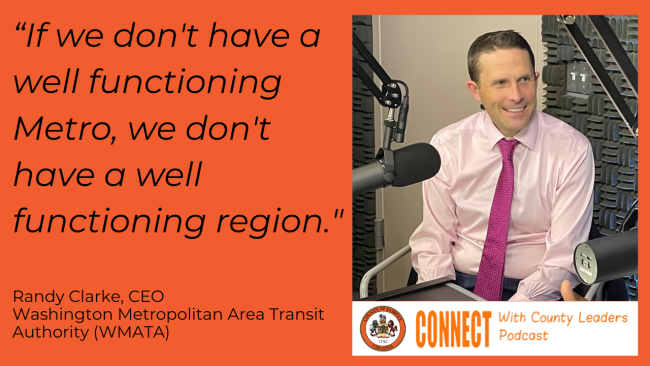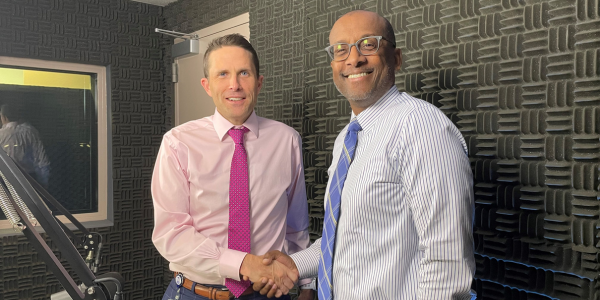METRO'S UNIQUE FUNDING CHALLENGES
One prominent issue facing WMATA is the lack of predictable funding, considering its governance model and funding from four different jurisdictions. Metro currently lacks dedicated, predictable revenue sources compared to other transit systems. Clarke notes the money aspect is a core structural problem impacting operations. However, he remained optimistic about Metro’s value as an economic driver for the region.
“3% of the land of the region is within a half mile of Metro, which makes up almost a third of the tax base for the region. 3% equals 30%,” Clarke stated.

AN INTERCONNECTED REGION
From transporting the federal workforce and visitors to serving as part of the national security infrastructure, WMATA plays a vital role in serving the nation’s capital as it connects communities across Virginia, Maryland and the District of Columbia.
Clarke believes in collaboration between state delegations, regional leaders and the administration to pave the way for success.
“Getting more people on transit systems can help alleviate traffic for those who don’t have the option of using transit,” Clarke explains, emphasizing the importance of public transportation in alleviating congestion.
WORKING TOWARD A SUSTAINABLE FUTURE
As part of WMATA’s commitment to sustainability, Clarke speaks passionately about the ongoing transition to zero emissions. However, he emphasizes the need for substantial financial investment in this environmental endeavor.
“Transitioning to zero emissions and increasing the use of public transit benefits the environment more than focusing solely on the propulsion system technology,” he noted.
WASHINGTON METROPOLITAN AREA TRANSIT AUTHORITY
The Washington Metropolitan Area Transit Authority was created by an interstate compact in 1967 to plan, develop, build, finance and operate a balanced regional transportation system in the national capital area. Metro began building its rail system in 1969, acquired four regional bus systems in 1973, and began operating the first phase of Metrorail in 1976.
Today, Metrorail serves 98 stations and has 128 miles of track. Metrobus serves the region seven days a week with over 1,500 buses. Metrorail and Metrobus serve a population of approximately 4 million within a 1,500-square mile jurisdiction.
CONNECT WITH THE COUNTY LEADERS PODCAST
The “Connect with County Leaders” podcast is a monthly opportunity to meet and connect with Fairfax County leaders, to learn about the latest county news and information, and hear more on specific programs and services in Fairfax County.
Listen or watch past episodes of “Connect with County Leaders” on SoundCloud, YouTube and Channel 16 Podcasts on Demand. For other Fairfax County podcasts, visit www.fairfaxcounty.gov/podcasts, and for additional audio content, tune in to Fairfax County Government Radio at www.fairfaxcounty.gov/radio.





 SIGN UP FOR DAILY EMAIL HEADLINES
SIGN UP FOR DAILY EMAIL HEADLINES